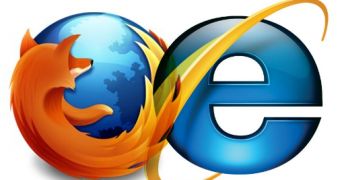The race between Mozilla and Microsoft is on yet again to establish positions such as innovation leader and follower, when it comes down to Firefox and Internet Explorer. And it will most probably fall on the two company’s next generation browser releases to help label the two software makers as either leading the wave in innovation or bringing to the market features that are already sported by the rival product. In this regard, Firefox 3.7 and Internet Explorer 9 are currently neck-in-neck at the start line toward the adoption and implementation of hardware acceleration.
Last week, at the Professional Developer Conference 2009 in Los Angeles, Steven Sinofsky, president, Windows and Windows Live Division, demonstrated a very early, just three weeks old copy of Internet Explorer 9, touting hardware acceleration as one of the major enhancements coming to IE users. In the video embedded at the bottom of this article, you will be able to get an insight into IE9 hardware acceleration possible because of Windows 7’s DirectX 11 graphics technology.
“We’re changing IE to use the DirectX family of Windows APIs to enable many advances for web developers. The starting point is moving all graphics and text rendering from the CPU to the graphics card using Direct2D and DirectWrite. Graphics hardware acceleration means that rich, graphically intensive sites can render faster while using less CPU. Now, web developers can take advantage of the hardware ecosystem’s advances in graphics while they continue to author sites with the same interoperable standards patterns they’re used to,” explained Dean Hachamovitch, general manager, Internet Explorer.
However, Microsoft is matched by mail competitor on the browser market, Mozilla, in regards to kicking the browser up a notch by better leveraging underlining hardware resource. Mozilla is, unlike Microsoft, offering an early, preview build of Firefox 3.7 which already makes use of Direct2D and DirectWrite.
“Although the investigation and implementation are still in an early stage, we can conclude that things are looking very promising for Direct2D. Though older PCs with pre-D3D10 graphics cards and WDDM 1.0 drivers will not show significant improvements, going into the future most PCs will support DirectX 10+. PCs in the future could allow providing extremely smooth graphical experiences for web-content like SVG or transformed CSS. Interestingly, Microsoft has also announced IE9 will feature Direct2D support as well only shortly ago. Feel free to download and try a build of Firefox with Direct2D support here,” said Mozilla’s Bas Schouten. (via DeepTech)
This is not valid for Internet Explorer 9. Despite dogfooding and demoing IE9, Microsoft did not serve any bits to users outside of Redmond. In addition, Microsoft did not even provide a clue as to when it plans to make the first build of IE9 available for early adopters. Mozilla’s open source development model wins yet again in this respect.
“First of all why is GPU acceleration important? Well, in modern day computers, it's pretty common to have a relatively powerful GPU. Since the GPU can specialize in very specific operations (namely vertex transformations and pixel operations), it is much faster than the CPU for those specific operations. Where the fastest desktop CPUs clock in the hundreds of GFLOPS(billion floating point operations per second), the fastest GPUs clock in the TFLOPS(trillion floating point operations per second). Currently the GPU is mainly used in video games, and its usage in desktop rendering is limited. Direct2D signifies an important step towards a future where more and more desktop software will use the GPU where available to provide better quality and better performance rendering,” Schouten explained.

 14 DAY TRIAL //
14 DAY TRIAL //